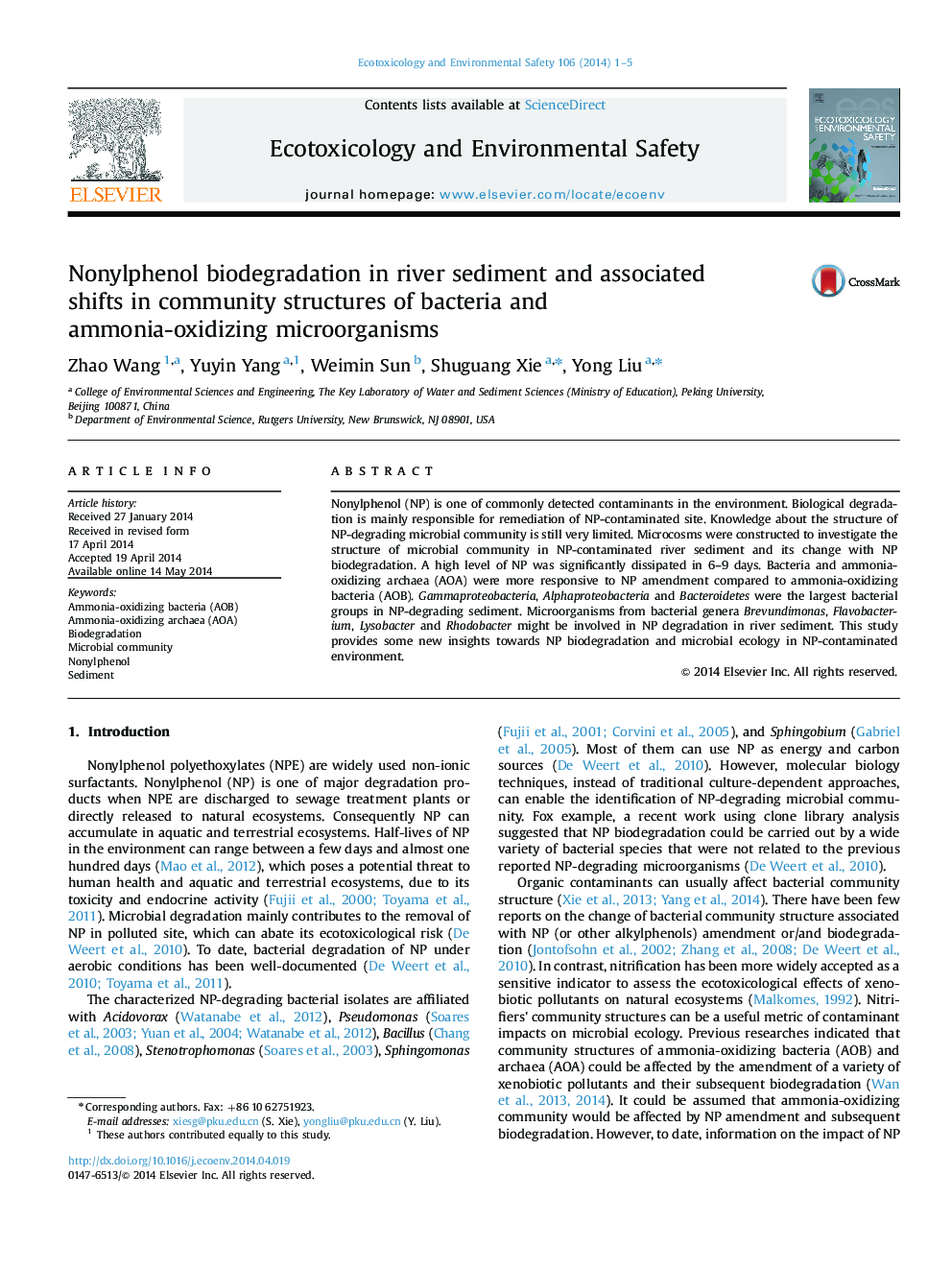| Article ID | Journal | Published Year | Pages | File Type |
|---|---|---|---|---|
| 4420015 | Ecotoxicology and Environmental Safety | 2014 | 5 Pages |
•Natural attention of NP can be fast.•Bacteria and AOA were more responsive to NP application compared to AOB.•Gammaproteobacteria predominated in NP degrading sediment.
Nonylphenol (NP) is one of commonly detected contaminants in the environment. Biological degradation is mainly responsible for remediation of NP-contaminated site. Knowledge about the structure of NP-degrading microbial community is still very limited. Microcosms were constructed to investigate the structure of microbial community in NP-contaminated river sediment and its change with NP biodegradation. A high level of NP was significantly dissipated in 6–9 days. Bacteria and ammonia-oxidizing archaea (AOA) were more responsive to NP amendment compared to ammonia-oxidizing bacteria (AOB). Gammaproteobacteria, Alphaproteobacteria and Bacteroidetes were the largest bacterial groups in NP-degrading sediment. Microorganisms from bacterial genera Brevundimonas, Flavobacterium, Lysobacter and Rhodobacter might be involved in NP degradation in river sediment. This study provides some new insights towards NP biodegradation and microbial ecology in NP-contaminated environment.
